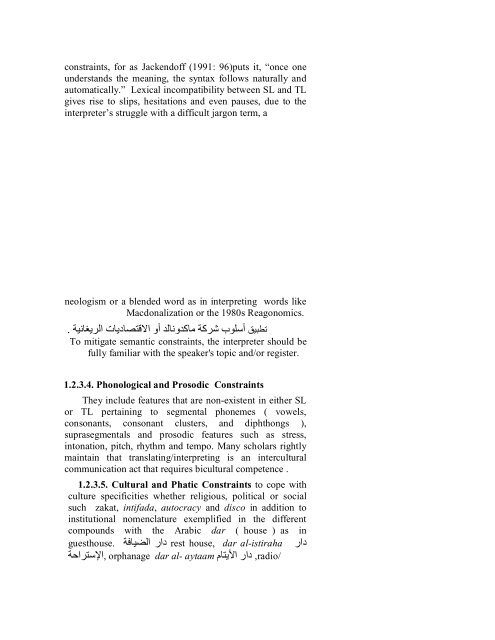424_2061_A.B.
424_2061_A.B.
424_2061_A.B.
- No tags were found...
Create successful ePaper yourself
Turn your PDF publications into a flip-book with our unique Google optimized e-Paper software.
constraints, for as Jackendoff (1991: 96)puts it, “once oneunderstands the meaning, the syntax follows naturally andautomatically.” Lexical incompatibility between SL and TLgives rise to slips, hesitations and even pauses, due to theinterpreter’s struggle with a difficult jargon term, aneologism or a blended word as in interpreting words likeMacdonalization or the 1980s Reagonomics.. To mitigate semantic constraints, the interpreter should befully familiar with the speaker's topic and/or register.1.2.3.4. Phonological and Prosodic ConstraintsThey include features that are non-existent in either SLor TL pertaining to segmental phonemes ( vowels,consonants, consonant clusters, and diphthongs ),suprasegmentals and prosodic features such as stress,intonation, pitch, rhythm and tempo. Many scholars rightlymaintain that translating/interpreting is an interculturalcommunication act that requires bicultural competence .1.2.3.5. Cultural and Phatic Constraints to cope withculture specificities whether religious, political or socialsuch zakat, intifada, autocracy and disco in addition toinstitutional nomenclature exemplified in the differentcompounds with the Arabic dar ( house ) as inguesthouse. rest house, dar al-istiraha , orphanage dar al- aytaam ,radio/16
















